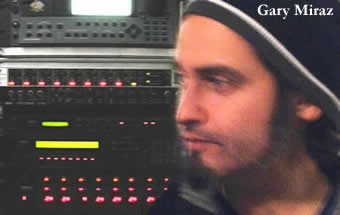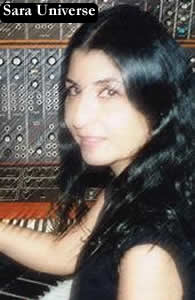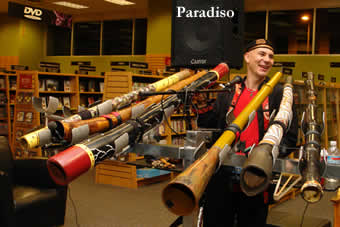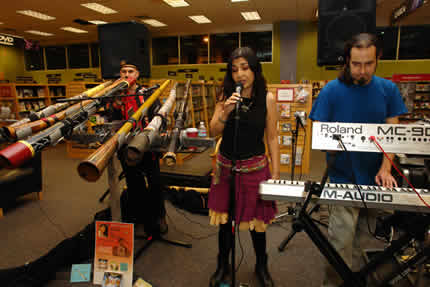 From time to time Cinema Without Borders has dealt with the music side of the film industry. Composer and visual artist Gary Miraz regularly contributes articles, which deal not only with his wealth of knowledge on film matters but with music technology as well. Not too long ago an idea came to me; why not establish a blog of Mr. Miraz’s experiences in the studio. When approached, he suggested seeing if readers cared to share their opinions in addition to reading a record of his experiences as a whole.
From time to time Cinema Without Borders has dealt with the music side of the film industry. Composer and visual artist Gary Miraz regularly contributes articles, which deal not only with his wealth of knowledge on film matters but with music technology as well. Not too long ago an idea came to me; why not establish a blog of Mr. Miraz’s experiences in the studio. When approached, he suggested seeing if readers cared to share their opinions in addition to reading a record of his experiences as a whole.
Gary has worked throughout the music industry; as a graphic designer, an assistant to high profile industry personnel, a studio owner, recording engineer, performer, teacher, art director, and all-around artist. Using his writing skills he wishes to advise others who would like to enter the industry or simply read about someone else’s journey.
So from time to time, and as often as time permits Gary will submit an entry to his blog. He is in the process of finishing his new release, “ONWARD” and is currently working on an album with world music vocalist Sara Universe. He is also doing a number of album covers such as New Age Didjeridoo artist Paridiso and Classical pedal steel guitarist Michael Perlowin. http://mirazmusik.wordpress.com/
Michael Perlowin. http://mirazmusik.wordpress.com/
We had a chance to interview Gary and briefly discuss his career and future aspirations. Here it is:
Cinema Without Borders: What was your first experience with World Music?
Gary Miraz: My first real acknowledgement was at the young age of 4 listening to George Harrison’s Within Without You.” The tambour drone, sitar and most notably the tabla were something that sent me somewhere where I had never been. The melody is haunting as well. Indian instruments have a sound that is mystical and not of this dimension. My mother did not really like that track but I played it continuously and asked what it was. She looked it up and explained it to me. My first glimpse of an actual sitar was soon afterwards in the Blake Edwards film “The Party.” The late great Peter Sellars was playing it that early scene when he receives the invitation.
CWB: Were you taking any musical lessons at that time?
GM: No. Not until much later. My musical upbringing developed from my mothers love for it. She had a hefty collection, which contained anything from Percy Faith to Led Zeppelin. She was also into classical music, especially the ballet. She also explained to me what each instrument was and how it sounded. I remember her explaining to me what a mellotron was. That was a trip.
CWB: Are there any musicians in your family? GM: My uncle Leonardo plays jazz clarinet and I have an aunt who plays piano and harp. I just found out my father can play guitar! I have got to get him back into it. My grandfather was a painter and illustrator and he worked with Disney and Coppertone in the late 60’s and 70’s; I believe he did a stint with Hanna-Barbera as well.
GM: My uncle Leonardo plays jazz clarinet and I have an aunt who plays piano and harp. I just found out my father can play guitar! I have got to get him back into it. My grandfather was a painter and illustrator and he worked with Disney and Coppertone in the late 60’s and 70’s; I believe he did a stint with Hanna-Barbera as well.
CWB: You are a visual artist as well.
GM: Yes I inherited his abilities and have been drawing since I can remember. Two of my uncles, Leonardo and Caesar, have it as well but don’t utilize it. My main source of living for many years was doing graphic design for the music industry. That is how I entered all this.
CWB: Getting back to world music, where do you see it going in the film industry?
GM: In many ways it has always been a part of the film industry since practically the beginning. Remember, early films were made to take the audiences away from the present lives. Today, when I see some of these films, there is always some ethnic “nod” to the period and place being represented- no matter how corny it may have been. I believe though that the big break came in the 80’s with Peter Gabriel’s soundtrack to the “The Last Temptation of Christ”, hand in hand with the Fairlight’s CMI workstation and New England Digital’s Synclavier sampling capabilities. Many of the sounds from their libraries were of ethnic instruments and phrases. Not only did Gabriel sample and use the sounds, but also his interest in discovering and recording ethnic artists and bringing their work to the western culture was a revolution. Not to give Gabriel all the credit, world music was everywhere beforehand. Ravi Shankar, pioneered its exposure to western audiences in the 60’s, Miles Davis, Weather Report, and Don Cherry among others used it in jazz. Electronic artists Tangerine Dream utilized it most notably in their 1983 “Hyperborea” and let’s not forget Vangelis. Listen to his soundtrack to Ridley Scott’s “Blade Runner and be prepared to be amazed. The 80’s also gave us “Dead can Dance”, who really did something that was radically different from Gabriel. You hear their influences as much as Peter’s today. The Internet has brought on a widespread introduction to World Music as well.
CWB: And now?
GM: Listen to NBC’s “Heroes”. Amazing music. Wendy and Lisa from “the revolution” (Princes 80’s backup band) are credited with the music. But it consists of various artists as well like Sheila Chandra. Hans Zimmer and Lisa Gerrard’s soundtrack to Gladiator a few years back, Troy, The Last Samurai. It has become a trend, as has cross –cultural studies in screenplays. Babel, Lost in Translation, Beyond Borders, The Missing, etc. Even the music in Persepolis is a mix of European influenced Iranian 70’s pop music. That was shocking to me. Listen to Iran’s pop queen Googoosh’s early material and you will understand. India’s Bollywood is going to infiltrate soon as well.
Gerrard’s soundtrack to Gladiator a few years back, Troy, The Last Samurai. It has become a trend, as has cross –cultural studies in screenplays. Babel, Lost in Translation, Beyond Borders, The Missing, etc. Even the music in Persepolis is a mix of European influenced Iranian 70’s pop music. That was shocking to me. Listen to Iran’s pop queen Googoosh’s early material and you will understand. India’s Bollywood is going to infiltrate soon as well.
CWB: And how does this affect your compositions?
GM: First, I’m married to a Persian woman, Sara Universe, who plays setar and sings in the Miraz Ensemble. Second my musical background incorporates different avenues of experimentation. Third I love the energy, both intense and subtle, that ethnic rhythms and composition evoke.
CWB: What are some of the releases you have done?
GM: To date I have 5 “official” released albums. “Through Fields of Stars” and “Circular” with didgeridoo player Paradiso. One with New Age artist Suzanne Doucet that is entitled “Resonance”, another with world techno band “Tonehenge” and one with Sara Universe called “Hidden Soundtracks of the Found Mind”.
CWB: “Hidden Soundtracks…” caught my ear when I first heard it back in 2006. I have never heard anything like it. It has elements of world music mixed with ambient textures. The last piece “I Want to Know” is techno but Sara’s vocals keep it in the ethnic mood.
GM: Sara is a great vocalist. She has an original voice. Some say angelic. You recognize it immediately. She is also very creative in her phrases and is fast in arranging them.
CWB: On the website (www.mirazmusik.com) plus (www.myspace.com/mirazmusikrecordings) and Sara Universe’s site at (www.myspace.com/sarauniverse) you have some new works that are not on any album? Will they be officially released?
GM: Some are from the follow-up to “Hidden” such as “Mystic Chant”. Others like “DEEP” will be released on my first solo CD entitled “Onward.” It has elements of world music instrumentation. For example I used a santoor for “Forboding” and ARP 2600 Filtered tables which I played on “God’s Domain.” Plus I recorded that album not only here but in Europe and South America. So it contains some influences from different locations as well as my emotions. It will be out by mid summer 2008.
CWB: Can you tell what other projects will you be working on? Any film offers?
GM: That is funny you should ask. Sara and I have been offered to do some incidental music for a film company that has several projects on hand. That should start sometime in November 2008. I do not know of any details at the moment but their descriptions are very esoteric. I am also starting on a project with Paradiso that incorporates many musicians through the world through SKYPE and a long awaited follow up to “Resonance” with Suzanne Doucet.
BT: Great! You have a lot going for you. Keep up with the wonderful music. Thank you for your time and keep us posted.
GM: you are very welcome.

